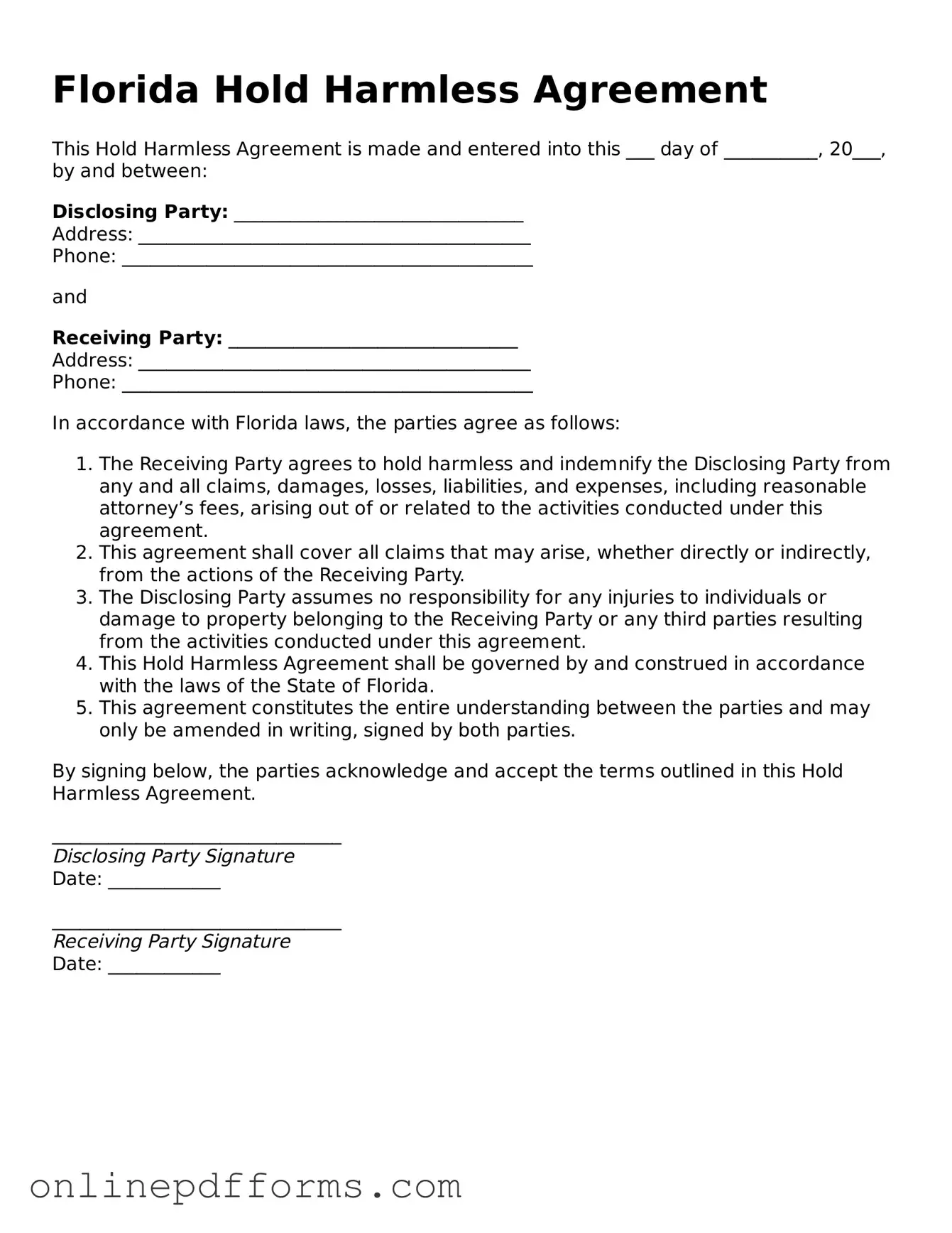The Florida Hold Harmless Agreement is similar to a Waiver of Liability. Both documents are designed to protect one party from legal claims or liability. In a Waiver of Liability, an individual agrees not to hold another party responsible for any injuries or damages that may occur during a specific activity. This is often seen in sports or recreational activities. The essence of both documents lies in the idea of assuming risk and acknowledging that accidents can happen, thus limiting legal recourse against the party being waived.
Another document that shares similarities is the Indemnity Agreement. Like the Hold Harmless Agreement, an Indemnity Agreement involves one party agreeing to compensate another for certain damages or losses. However, indemnity often includes a broader scope, covering not just liability but also costs related to legal defense. In both cases, the goal is to shift the financial burden of legal claims from one party to another, providing protection in potentially risky situations.
The Release of Claims form is also comparable. This document allows individuals to relinquish their right to make claims against another party. It is often used in situations where one party has provided a service or activity that could lead to injury. Similar to the Hold Harmless Agreement, a Release of Claims emphasizes the voluntary acceptance of risk and the understanding that the signer will not pursue legal action in the event of an incident.
A Liability Insurance Policy can be viewed as related to the Hold Harmless Agreement. While the agreement itself is a legal document that outlines responsibilities and risks, liability insurance provides financial protection against those risks. Both serve to mitigate the consequences of accidents or injuries, but the insurance policy offers a safety net, ensuring that funds are available to cover potential claims.
The Non-Disclosure Agreement (NDA) also shares some common ground, particularly in the context of protecting sensitive information. While NDAs focus on confidentiality, they also establish boundaries and responsibilities similar to those found in Hold Harmless Agreements. Both documents create a framework where parties agree to limit their exposure to potential legal issues, whether those involve liability or the sharing of confidential information.
The Service Agreement can also be likened to the Hold Harmless Agreement. Service Agreements outline the terms under which services will be provided, often including clauses that limit liability. In this way, both documents aim to clarify expectations and responsibilities, helping to prevent disputes and ensuring that all parties understand their obligations and risks involved.
Lastly, the Partnership Agreement can be compared to the Hold Harmless Agreement, especially in the context of liability among partners. Partnership Agreements often include provisions that outline how liability will be handled among partners, similar to how Hold Harmless Agreements delineate responsibilities in riskier situations. Both documents seek to establish clear guidelines to protect individuals from unexpected liabilities that could arise from their association or activities.
